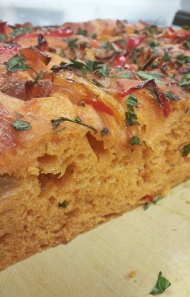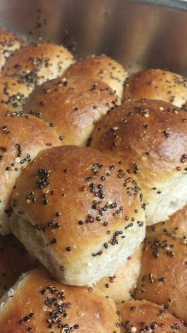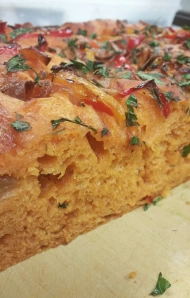“The free bread basket is off the table.”

Breaking bread before the meal begins is a social more that transcends the globe and dates back thousands of years. Not surprisingly, tampering with ‘the staff of life’ has led to many bread riots, some of which fomented the early stages of the French Revolution. In today’s dining climate, we seem to be setting the stage for another bread revolution of sorts as diners rebel against the restaurants that have done away with the free bread basket.
At one end of the dinner table sit those who nosh happily on free bread as they peruse the appetizer menu, and for the greater part of history, restaurateurs happily obliged. In the 1800s, the earliest iterations of contemporary restaurants were not sit-down affairs with white tablecloths and tableside service. Rather, they were taverns that served an inclusive menu at a fixed price. If customers gorged on the free bread, then they ate less of the expensive main dish and restaurateurs saved money. As dining traditions evolved to the current a la carte model where diners pay for what they order, the free bread basket persists as a symbolic gesture of hospitality.
I love when people complain about our 6 dollar bread they neglect to mention the generous knob of house made butter (that’s so fucking tangy and good). BREAD ISNT FREE SOMEONE MADE IT
(and if it is free? trust me ur paying for it somewhere)
— Jen Agg (@TheBlackHoof) June 23, 2018
At the other end of the dinner table sit those, chiefly bakers and business owners, for whom complimentary bread service is an antiquated custom of largesse and surfeit. ‘Free’ perpetuates the misguided notion that bread is a cheap staple that should be available to everyone. ‘Free’ creates the illusion of a bargain, but only on the part of the diner because the cost is borne by someone else.
One way to bear the cost of a free amenity is to produce it at the cheapest cost. Rare is the restaurant that will invest the time, space and staff to bake good bread when the guest is not paying for it. In today’s fashionable dining circles then, it’s better then to charge for good bread than to serve mediocre, but gratis, bread.

But even the mediocre bread is getting expensive. Costs, notably rents and wages, are rising at an astonishing rate—far quicker than we can raise menu prices. In New York City, rent can triple unexpectedly at the end of a 10 year lease. Minimum wage has jumped from $9 to $13, a 50% increase in a few years. The cost of wheat has fluctuated dramatically due to drought and political instability in wheat-producing countries so that purchasing bread, once a labor-saver, is no longer the bargain it used to be.
At any restaurant, the cost of bread is not insignificant and becomes more onerous in highly rated restaurants. When rolls cost fifty cents apiece multiplied by the number of days a restaurant is open, it is not uncommon for a restaurant to spend upwards of sixty thousand dollars a year just on rolls. When diners are less likely to eat bread because current dietary trends dictate avoiding gluten, the cost of the free bread basket is one that restaurants can no longer afford.
To put these ideas into real-world context, my labor and food budgets are based on revenue. Now, when plated desserts are my only revenue, I can offset the cost of the free bread by making the desserts really expensive (and less likely to sell), or I can buy cheap ingredients to offset the wages for my staff. Either way, it’s lose-lose.
Yes, we are in the hospitality business but it’s still a business. Eat all the bread you want, but if you want it, you’ll have to pay for it.










Leave a comment